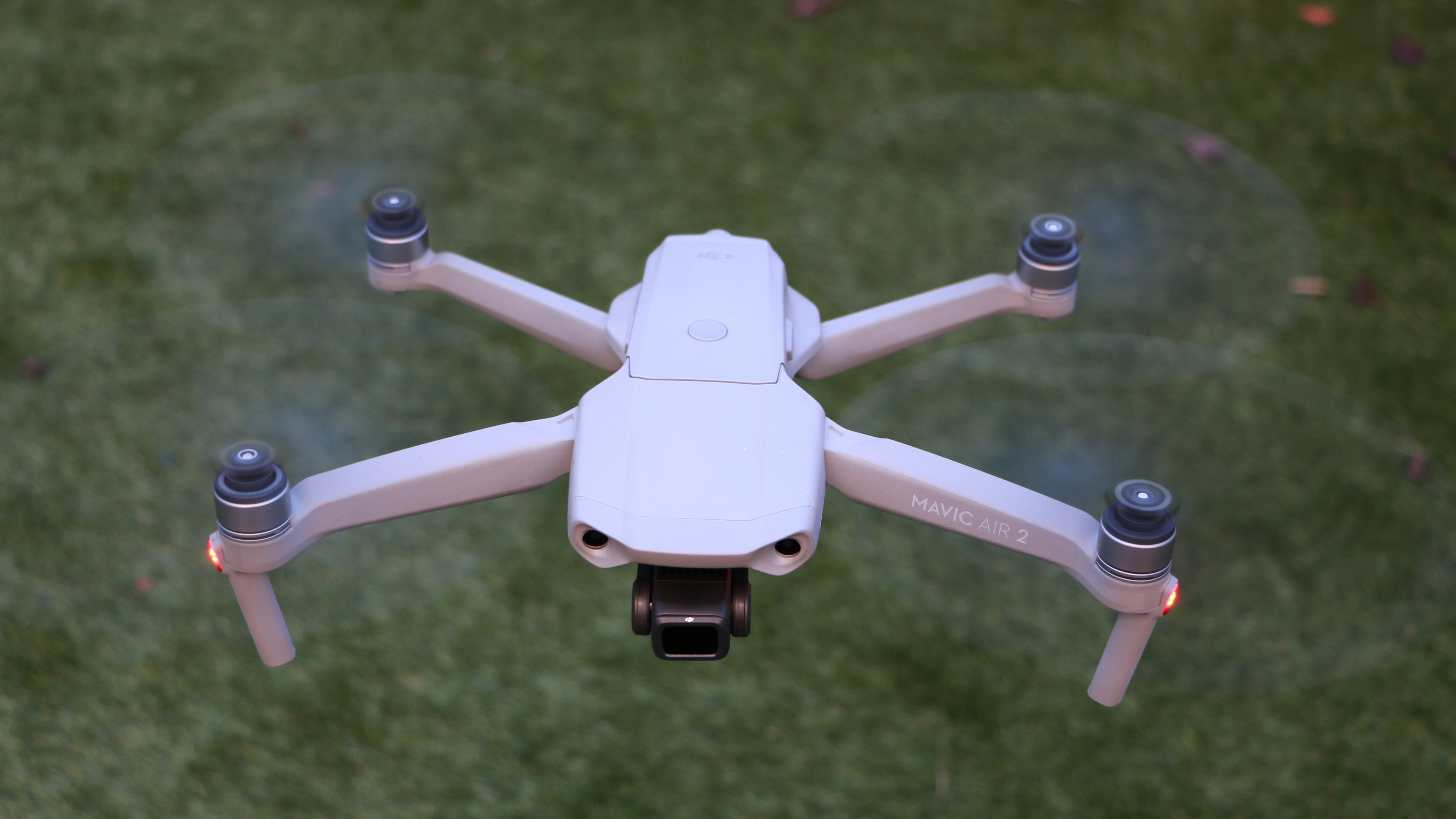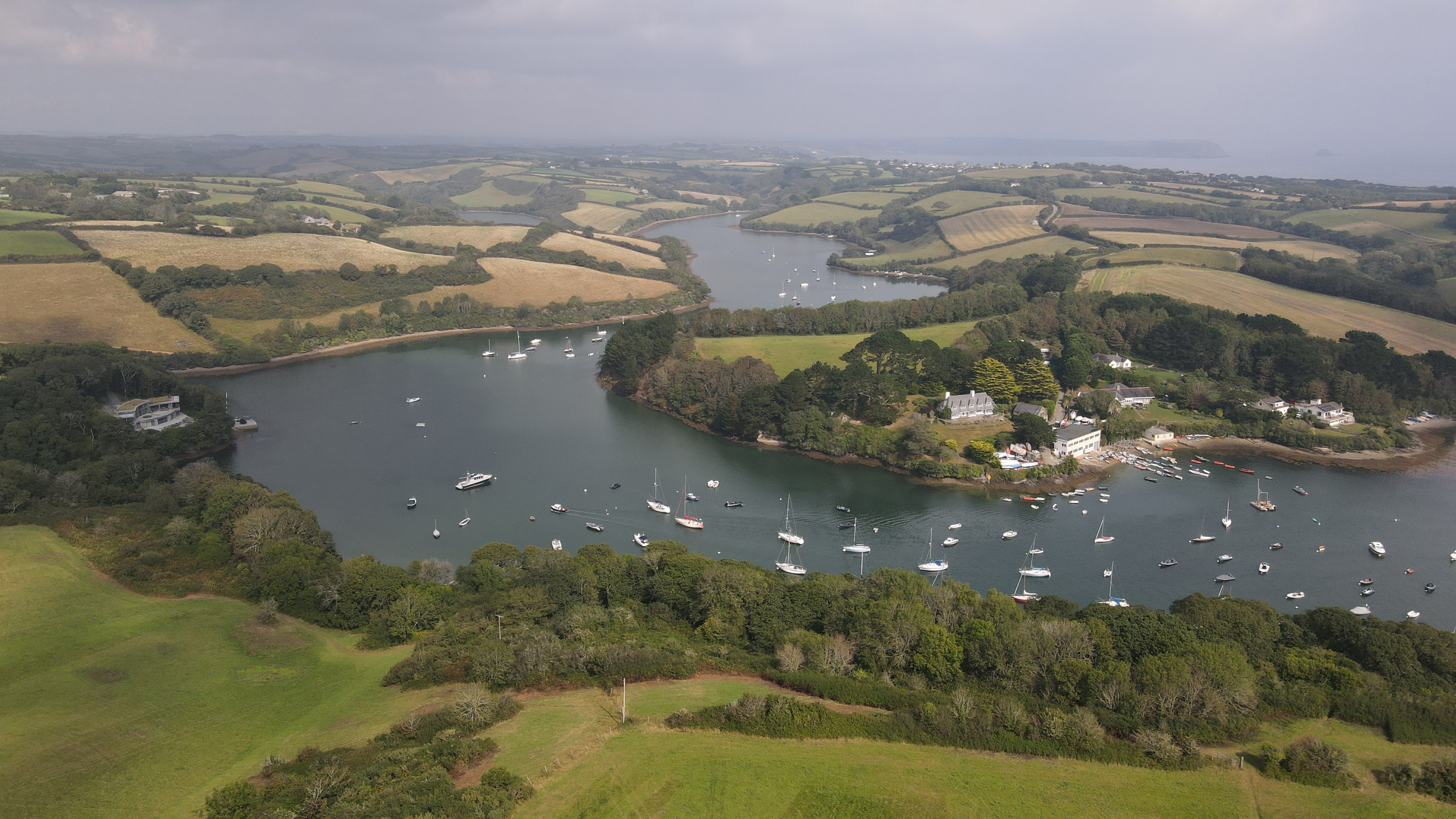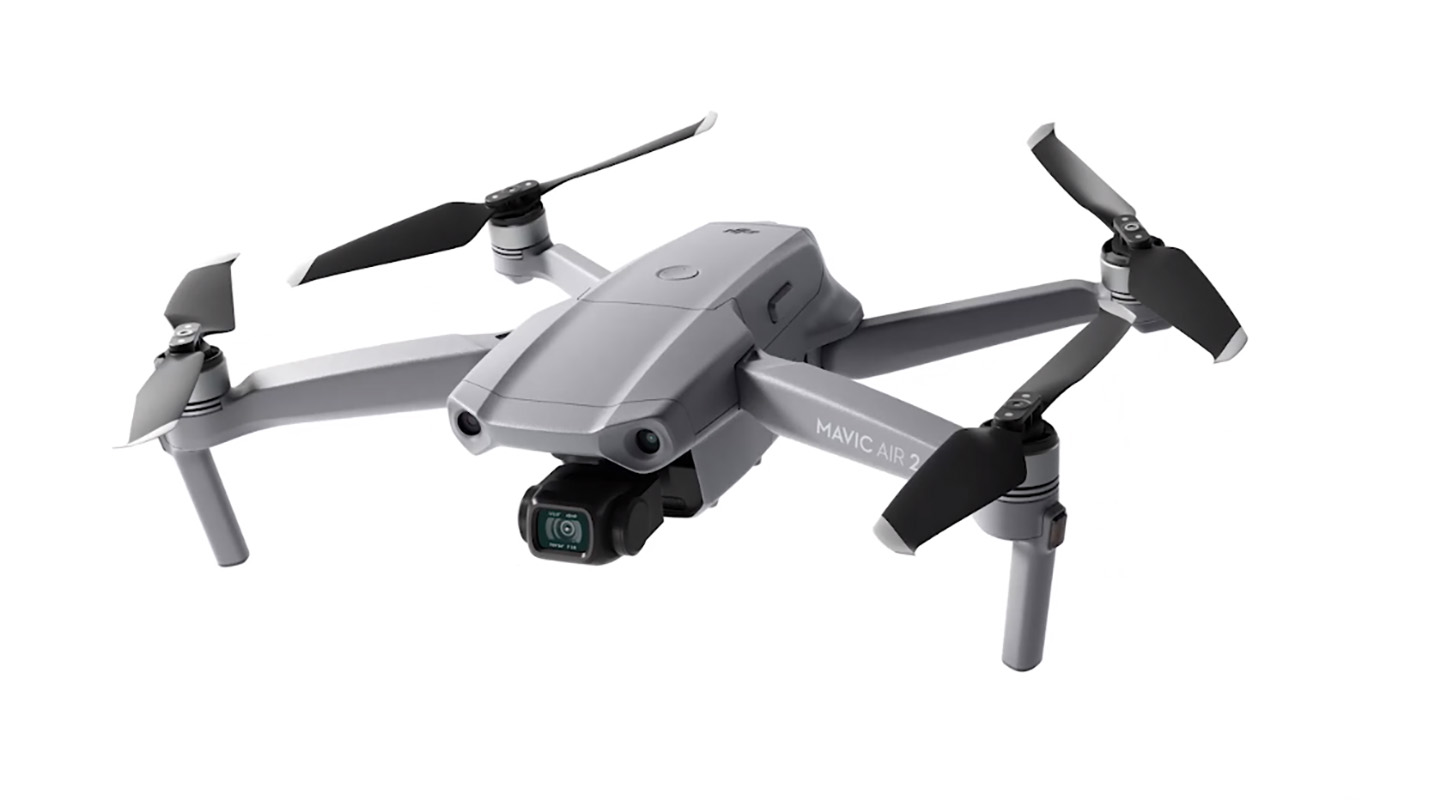Space Verdict
The Mavic Air 2 is a serious upgrade from the Mavic Air, with an excellent set of features and impressive performance for this price.
Pros
- +
Safety features include obstacle avoidance
- +
Very easy to fly
- +
Increased flight time of 34 minutes
- +
Excellent video and stills quality
Cons
- -
Sits low when on the ground
- -
Video feed can ‘judder’ and cause blur
Why you can trust Space.com
When it came out in April 2020, the Mavic Air 2 was a real game changer. Born out of the success of its predecessor, the new model offered some serious upgrades, including a much-improved battery and some nice new shooting features. DJI's aim had been to build an easy to fly drone, but one that offered advanced pilots and photographers plenty to play with. The result was a drone that feels similar to the Mavic Pro in many respects, but costs a lot less.
Weight: 20oz
Folded dimensions: 7.2 x 3.3 x 3 inches
Unfolded dimensions: 7.3 x 10 x 3 inches
Battery: Intelligent 5200mAh, LiPo 2S, 7 ounces
Charger: Input 100-240v, 50/60 Hz 1.3A; rated power 38W
Modes: Cine, Normal, Sports
Camera sensor: ½ CMOS
Video transmission range: 6.25 miles
Video resolution: 4K up to 60fps; 4K at 60fps; FHD at up to 240fps
Max Bitrate: 120 Mbps
Flying the Mavic Air 2 could not be simpler. From the case, the arms fold out, and the propellers are then easy to fit (taking care to match the color codes with the motors). The intelligent battery slots neatly into the top. All in all, it's a very compact package and one that will probably please most drone pilots.
Its 1/2 inch CMOS sensor isn't as impressive as those found on some of the more recent additions to DJI's line-up – the slightly newer Air 2s boasts a 1-inch sensor, for example – and it lacks some of the clever AI features found in newer models, too. But it's still a remarkably well-performing drone, especially at this price point.
As with most DJI drones, this isn't classified as a toy, so you'll need to abide by all drone regulations in your local area when flying. For anyone who's just getting started with the hobby, we'd recommend taking a look through our list of drone photography tips and tricks, to get the most out of your new gadget.
Mavic Air 2: Design

- Classic DJI shape with simple fold out arms; compact in size and weight
- With a carrying case and extra batteries easily fits into a small rucksack
- Simple to operate controller
The Mavic Air 2 has great appeal in appearance alone. It simply looks the business. If there is a small beef, it is that the uniform grey color does not lend itself to high visibility in every circumstance (but there are proprietary colored ‘overcoats’ available, not sold by DJI). It does sit rather low to the ground though, so you’ll need to either use a landing mat or buy extension legs which will lift it clear of any grass not closely cut.
Drones of this size are fairly delicate when it comes to their cameras. Any kind of manhandling will cause damage. The same can be said to be true of the total build of the drone. The MA2 is relatively robust in build quality, but heavy handling, for instance in removing it from its case or in putting it away would not be a good idea. Heavy duty cases with inbuilt padding are available, the downside being they are bulky in size.
With the MA2 comes a new controller, sadly without a screen, but with a cable connection to a smartphone and hence the DJI Fly App. The controller itself is sturdy and lightweight. Apart from the two toggles, which are stored when not in use in neat recesses at the rear, there is an on/off button, a mode selector (between Cine, Normal and Sport), an RTH button, one function button and one for changing by a click between video or camera. On the front right, there is a shutter button, and on the front left there is a gimbal control wheel.
Breaking space news, the latest updates on rocket launches, skywatching events and more!

Your smartphone connects to the controller via a cable and here here’s a small niggle: the way the cable is stored suggests that, over time, it might become frayed if care is not taken. The data shown on the screen is easy to read, with the top right providing battery life, and flight time remaining, along with satellite acquisition data. Next to these icons are two more, one showing the strength of the signal between the drone and the controller, and the status of the vision sensors. Data on height, speed and distance from you is shown, bottom left, while video and camera information is displayed on the bottom right. A film icon on the center right, when pressed, leads to drop down menus offering all the options in video and stills operations.
Also on the top right is a white dot icon which, when pressed, leads to menus for Safety, Control, Camera (status), Transmission and ‘About’ which provides details of the drone itself, including whether the firmware and the app version are up to date.
Altogether, the information you receive, much in real time, along with the video feed from the camera, could not be easier to absorb and understand. It makes for a very comforting sense of being in control. Voice messages and prompts complete the picture.
Mavic Air 2: Functionality

- 4K video and up to 48mps for stills, 12mps as standard
- Quick shots, Hyperlapse; Spotlight 2.0; Active track 3.0
- Video transmission with OcuSyn 2.0 gives improved transmission
- Obstacle avoidance sensors
The Mavic Air 2 is equipped with forward, backward and downward sensors, which gives a good deal of protection in both Cine and Normal modes, but not in Sports mode, where the system cannot keep pace with the speed.
Although the sensors are an excellent safety feature, a couple of things need to be borne in mind. It may seem blindingly obvious but there are no top or side sensors unlike with, for example, the Autel Evo range. It is possible to forget this and, while taking a long slow panning shot, slide the drone into a tree, or even a brick wall.
The system allows for both braking and by-pass with regard to obstacle avoidance; they work well but beware the limitations and fly the drone by observing it in flight, as well as what is shown on the screen.
Apart from the three flying modes, the Mavic Air 2 comes equipped with a host of special features, for instance, Focus Track. In Active Track this allows you to draw a box round your subject on screen, then for the camera to lock onto that subject and for the drone to follow it, either at a constant distance, or in parallel. As with obstacle avoidance, care is needed to ensure there is plenty of space for these manoeuvres.
Quickshots (where Active Track is to be found) also allows the standard suite of Dronie, Rocket, Circle, Helix, Boomerang and Asteroid modes, which will make your drone execute certain flight moves resulting in some neat video clips. The Mavic Air 2 also offers Hyperlapse shooting, giving you the option to control time and motion in shooting a cityscape or a sunset. Plain videoing, as well as stills photography is greatly improved by the ½ inch Quad Bayer sensor which allows for cleaner images. But noise is inevitable with a small sensor and an ISO of 400 is probably the highest setting you will be able to use. Experienced photographers are able to shoot in Raw.
Mavic Air 2: Performance

Thames at Runnymede

Roseland Cornwall

RWY + Mayflower marina
- Equipped with Cine, Normal and Sports flight modes, easily switchable
- Max 34 min flight time
- Obstacle avoidance system
Easy to fly, with plenty of safety features and pre-sets, this drone is fun to operate for beginners and advanced pilots. It even features tutorials on the controller, to take you through each step of flying.
The attention to safety is comprehensive here. Apart from the avoidance sensing system, the Mavic Air 2 comes with the Advanced Pilot Assistance System (APAS) 3.0 which allows the drone to change its route when it comes across anything in its path (again: not available in Sports mode so be careful when flying the drone at its top speed).
There’s also Airsense (only available in the USA) which applies aero-technology to receive signals from nearby aircraft and to give a visible warning on the control screen. It’s a nifty addition at a time when the skies grow ever more crowded.
DJI drones all come with Geofencing, which prevents this drone from flying in a restricted zone, for instance, near to an active airport, or other dangerous areas. This feature can be unlocked for specific purposes by DJI, if the requisite permissions are sought and given.
In the air, the impressive stability of the Mavic Air 2 in windy conditions (up to Beaufort Force 5) means that when shooting video or stills the pilot can concentrate purely on composing the shots.
The controller also holds its power for a very long time. If you do opt to go for a Fly More package when you buy, you’ll get three extra flight batteries, which means you will get plenty of time to fly the drone and create your videos/ stills.
Mavic Air 2: Cost
Available for $799, or as a Fly More Combo for $988, this drone is in the middle of the market when it comes to price.
For comparison, the just-released Mavic 3 costs $2,199, although this does feature a duo camera set up: a four-thirds camera sensor and a separate tele zoom camera. Something that’s a little more similar to this model, like the Parrot Anafi – which boasts a 1/2.4’’ CMOS sensor – will usually only set you back by about $700.
Mavic Air 2: Should you buy?
You should buy the Mavic Air 2 if you want an amazingly good value high entry drone which is simple to fly yet can provide you with close to professional standards for video and stills.
It packs a host of features for creative work, and its on-board safety aspects give peace of mind. If you are particularly safety minded, the Airsense feature, using ADS-B technology, will alert you to aircraft nearby. It all helps to make your drone flying safe and secure.
Mavic Air 2: If this product isn't for you
The obvious rival to the Mavic Air 2 is the Air 2S, retailing at $999 or $1299 for the Fly More Combo. This drone comes with a 1-inch camera sensor and additional obstacle sensors pointing upward.
Alternatively, the Parrott Anafi ($700) is a possibility. As mentioned above, this offers a 1/2.4’’ CMOS sensor and folds down nicely, making it a portable unit for on-the-go photography.
Tim Madge is CEO of Madge Aerial Photographic and Survey, a drones business based in Windsor, UK. He is a long-standing journalist and writer, specializing in adventure sports and anything else to do with the great outdoors. As well as being a commercial drone pilot, Tim is a paraglider pilot, and interested in all things to do with aviation.


